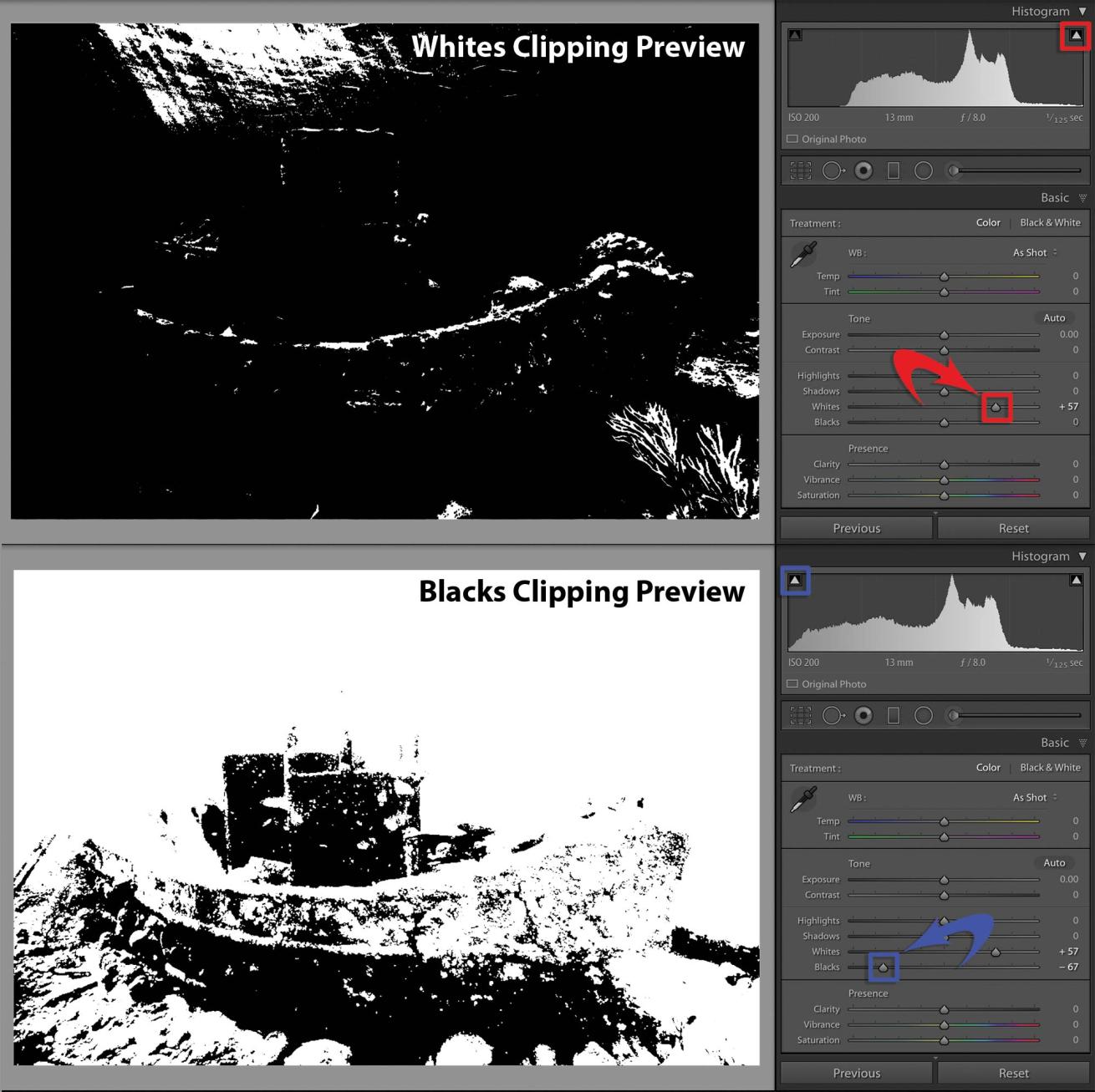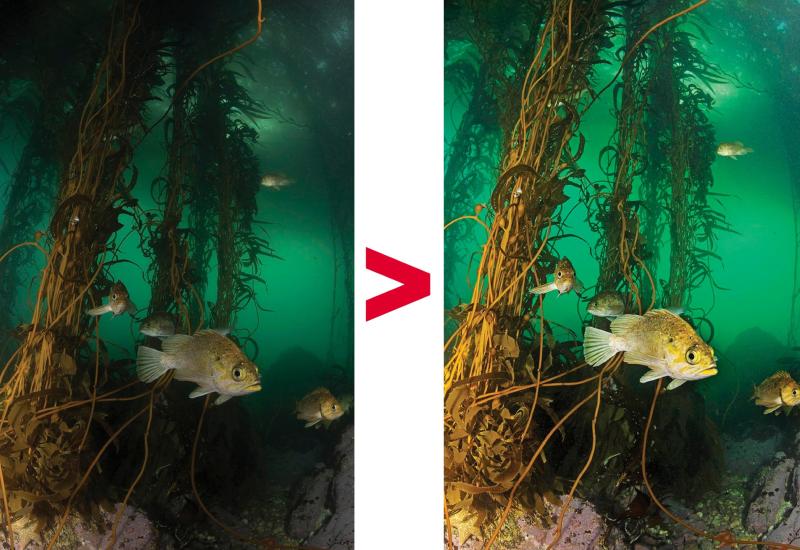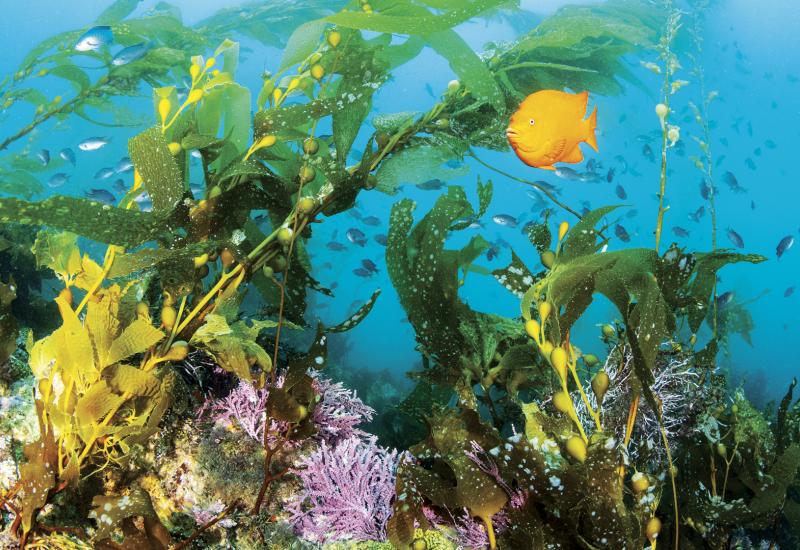How To Edit Wreck Diving Photos in Adobe Lightroom
Three Tips for Editing Wreck Photos
Wreck photos are rich with all kinds of form, texture and gritty, scratchy detail, and they hold up surprisingly well in less-than-ideal conditions. Use these tips to make your wreck images pop in post.

Erin Quigley
Default Black-and-White Conversion
This is what the image looked like using the standard Black-and-White Conversion in Adobe Lightroom. It leaves something to be desired, to say the least.
1 DO BLACK-AND-WHITE RIGHT
Wreck photos shot with ambient light are excellent subjects for black-and-white images. Unfortunately, the default grayscale conversions in Lightroom and Photoshop produce lackluster results.

Erin Quigley
Manually Edited
This, on the other hand, is what the image looked life after editing using the Black-and-White Conversion with black points and white points. Much better!
A dramatic black-and-white photo must have clean black and pure white somewhere in the picture. Add punch to your shot by setting real black and white points using the clipping previews in Lightroom or ACR (Adobe Camera Raw).

Erin Quigley
Use the Clipping Preview
Make your wreck photos look sharp using Lightroom or Adobe Camera Raw
In the Basic Panel, hold down Opt (Mac)/Alt (PC) while moving the Whites slider to the right. At first, the clipping preview will be completely black, but as the slider moves right, areas of white will appear. As soon as you see some white, back off until there’s just a tiny speck. Release Opt/Alt to set the white point.
Go to the Blacks slider and hold down Opt or Alt as you move it to the left. The clipping preview will be completely white. As the slider moves left, small areas of black will appear. When you start to see black, back off until there are just a few black pixels showing. That’s your black point.
Build drama by using the rest of the tools at your command; readjust the black and white points as a final step in the conversion process.
2 ADD CONTRAST AND TEXTURE USING CLARITY AND DEHAZE
Clarity is a slider that when applied in a positive amount, makes images appear crisper and more dimensional. Applied in a negative amount, Clarity creates a soft-focus effect. Unlike the Contrast slider, Clarity targets only the midtones, increasing contrast in the big juicy middle of the image while protecting the brightest and darkest parts of the photo from clipping.
A heavy hand on the Clarity slider can result in a noticeably “crunchy” picture, so use a light touch when applying it globally from the Basic panel. Clarity applied selectively to the image by using multiple brushes and/or filters is often more effective than a single, big global pass.
The Dehaze slider in the Effects panel of Lightroom CC and ACR adds or removes atmospheric haze. Before using Dehaze globally on a color image, set the white balance since Dehaze tends to exaggerate undesirable color casts in underwater images.
Another way to use Dehaze is selectively. It can be applied locally with an Adjustment Brush, Graduated Filter or Radial Filter to add emphasis and intensity where it’s needed. Try using both Clarity and Dehaze on the same brush or filter to super-texturize a black-and-white wreck shot. Applied in a negative amount, Dehaze creates a fading- into-the-gloom effect.

Erin Quigley
Add Contrast
The Clarity and Dehaze panels in Adobe Lightroom can help you add contrast to your wreck photos.
3 ADD GRAIN TO UNIFY THE IMAGE AFTER EDITING
Photographers don’t usually add noise to their images, but adding grain helps to unify texture. The Spot Removal Tool in Lightroom and ACR can leave behind telltale edge artifacts. Likewise, the Healing, Cloning and Content Aware Fill tools in Photoshop can blur, smudge or granulate pixels. Adding a small amount of grain camouflages clunky edits and increases apparent sharpness for printing.
Three Grain sliders are in the Develop Module Effects Panel of Lightroom and Adobe Camera Raw.
When the Amount slider is set to zero, the other two sliders are inactive, so decide how much grain to add by first moving the Amount slider to the right. Zoom into an edited area and add just enough grain so the edits aren’t disrupting the texture. The Size slider controls how big or small the individual grains are, while the Roughness slider varies the virtual texture of the grain. You can toggle the Grain effect on and off by clicking the small “switch” in the upper left corner of the Effects panel.
I find that Grain settings Amount 9, Size 9 and Roughness 10 often work for me. Don’t ask me why, they just do.
See all of Erin Quigley’s Editing Tutorials Here
Erin Quigley is an Adobe ACE certified digital-imaging consultant and an award-winning shooter. GoAskErin.com provides custom tutorials and one-on-one instruction for the underwater photographic community.










